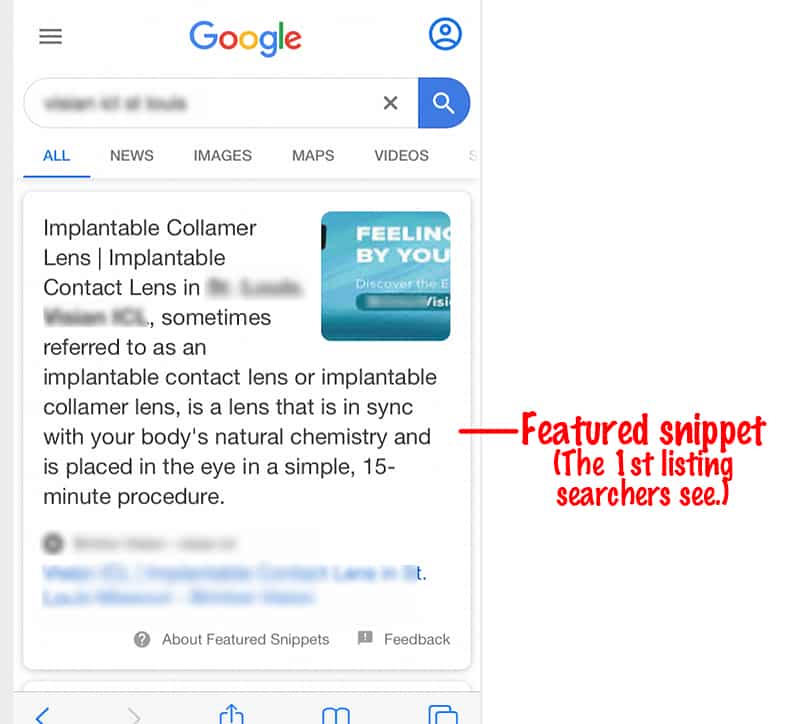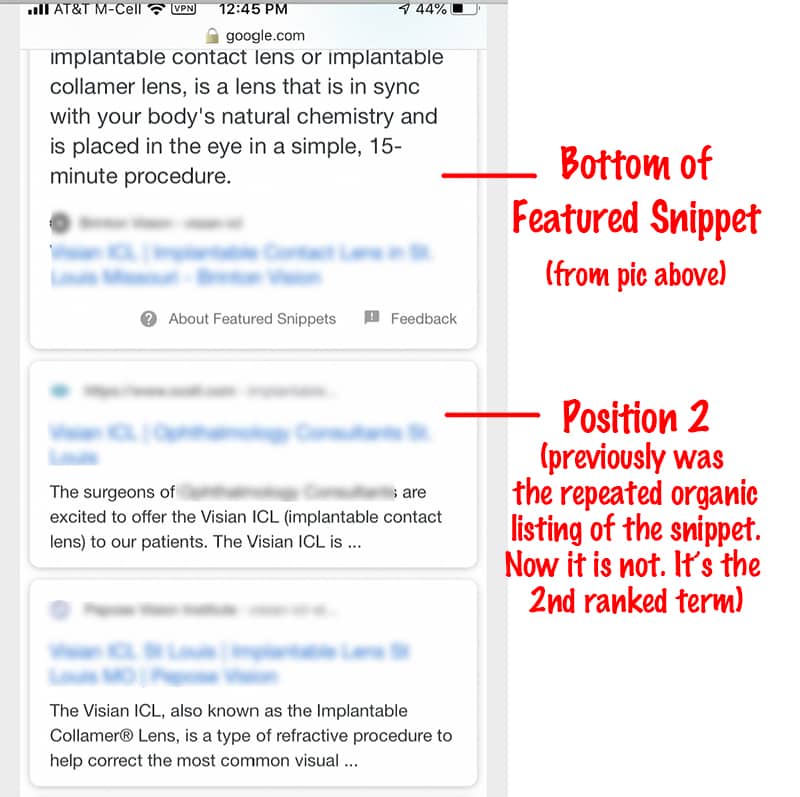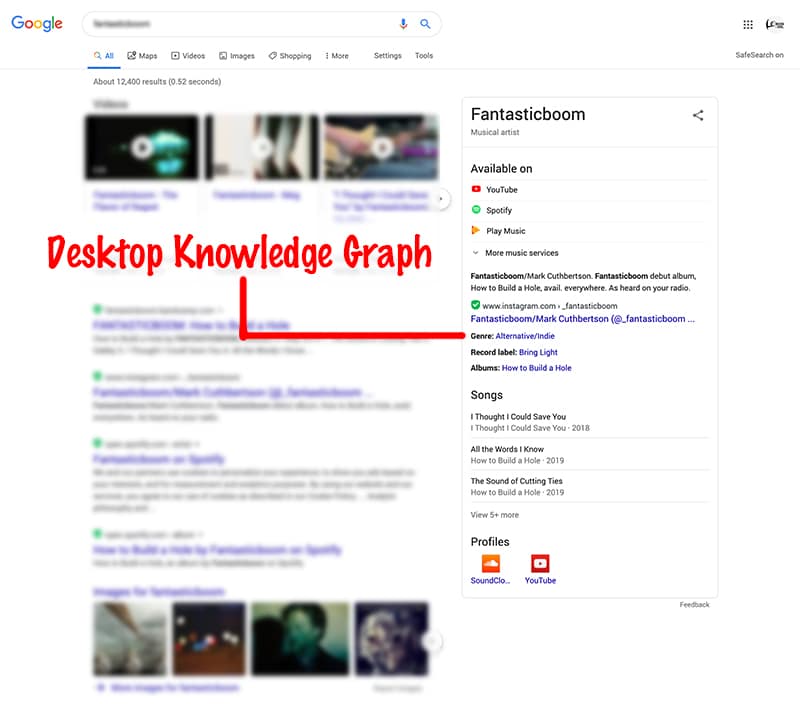In the past two days, Google rolled out something new. Google no longer repeats Featured Snippet links in Search results. This news is spreading like wildfire in the SEO community–unfortunately, with a lot of poor speculation attached to it.
What is a Featured Snippet?
It’s often the first thing you see when you search. Featured snippets are search results that Google selects to show in Google’s organic results just below the ads. Google presents a box with a search result they feel answer the searcher’s question immediately.
What is the change Google made to Snippets?
Previously, the website that has the snippet listing was also listed immediately below the snippet (repeated as a listing) as a regular #1 organic ranking page. Google considered the snippet Position 0 and the first listing Organic Search Position 1. With the new change on January 23, 2020, there is no “position 0.” The snippet is now considered position 1. The old position 1 is now position 2. This means the 2nd ranked term in the SERPS which shows just below the snippet. If you hold the snippet position, you don’t get double listed on page 1 as before.
Below is an example of a featured snippet.
Why Are People Freaking Out Over the Snippet Change?
This change means if you have the featured snippet for a listing, your organic listing will not be repeated immediately below it. In fact, it will not be repeated on page 1. For some reason, this is causing some brands and SEOs to “freak out” unnecessarily.
They fear that the snippet will not get clicked. But we do not have enough time to accrue real data as to this being true or not. Remember, this is new to the person searching, too. Don’t make a major decision too soon. Allow the users’ true behavior to settle down as they adjust to this new presentation of search results.
What Are We Doing In Response to the Snippet Change?
Moon and Owl’s SEO Team is very aware of this change. It rolled out on January 30, 2020 (yesterday from the time this article was written). We have noted/tagged each of our clients’ keywords where they hold the snippet (and whether they are general snippets or question snippets).
If you hold the snippet, you are still organically placed, just not twice. The link is still clickable in the snippet. It is a shift from Google offering a position 0 AND position 1 to ONLY a position 1. Previously, if your site had the snippet you typically ranked #1 as well. This gave you two listings at the top of Page 1. Now you only get one.
Methodology to Determine the Course of Action
There is a clear course of action to take at this time. We want to work off of science, not hunches. Here is the strategy:
01. We track your click-through rate/traffic on snippet ranking keywords both before this date and after this date see if these numbers increase, stay the same, or decrease.
02. Then, we make adjustments accordingly as the data suggests. For now, the working hypothesis is that we’d rather have the larger box of content when all things are considered. Data might change “all things considered,” but we can clearly see that.
03. Adjustments might include tweaking the schema or marking a page with “no snippet” coding if you hold a snippet but see traffic drop. Or, it might include trying to gain the snippet if the click-through rate (CTR) increases on similar type of keywords. Note: Not every search generates a snippet, but the number of snippets Google shows is growing.
The featured snippet takes up a massive amount of space, especially on mobile. Holding it will most likely work in your favor. The data will inform us of the decision to make. For now, we hold tight.
A Unique Opportunity
This change does present an opportunity to improve your visibility.
By focusing on gaining map pack rankings and getting your knowledge graph showing for important keyword queries, you can become more bulletproof against this change. Your knowledge graph isn’t limited to appearing only when your company or brand name is searched. If Google strongly associates a keyword with your brand, your Knowledge Graph can actually show on a high-value keyword query. This is a great position to occupy. We call it “Position King KG” when a knowledge graph pops for a non-branded term.
Whether your knowledge graph appears is impacted by how strong your entity is and how much Google associates your brand with a given keyword.
Entity strategy is one of our core approaches to SEO. Your competitors probably are not thinking this way.
We strive to keep you ahead of the curve. We also make data-driven SEO decisions. If you need SEO assistance, call us at 817-889-1487 or complete the Get Started Form for a free consultation.



